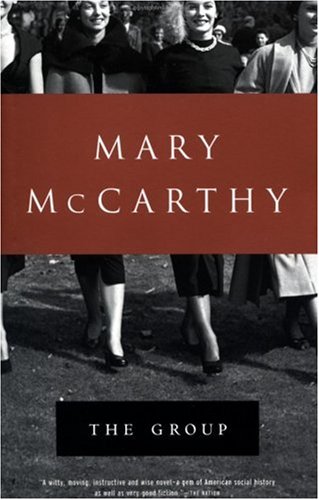Mary McCarthy’s most celebrated novel follows the lives of eight Vassar graduates (Class of ’33), known simply to their classmates as “the group.”

The tangled stories of eight different lives are united by the pivotal figure of Kay Strong–the first of the group to break from the traditions of society by getting married without parental guidance.
The social history presented here, pre-World War II, is equal in period quality to that presented in the tv show Mad Men (if not moreso).
The girls are all middle-class or upper-middle class, growing up during a revolutionary period in American life where women are forming an identity beyond their social class, beyond their parent’s social aspirations.
They work outside the home, they travel abroad alone, they philosophize, they use birth control, they buy this new thing called margarine.
All eight are in some way breaking with the past and forging a new status quo while at the same time falling into prescribed roles.
The language choice is striking and the novel’s structure of twists and turns reveals layers of insights into each character through the commentary and interior monologues of other characters.
McCarthy’s novel was published in 1963, thirty years after the time described in the novel, but the picture she paints of the times seems complete as well as insightful. (I particularly enjoyed the incredibly rich word choice and complex sentence structure. This is a novel written in a different time and its structure is reflective of the times represented.)
Quote: It was plain to Polly that many of her married classmates were disappointed in their husbands and envied the girls, like Helena, who had not got married. In June the class would have its fifth reunion and already it had its first divorcees. These hares were discussed wistfully by the tortoises of the class. It was felt that they at least had ‘done something.’ Norine Blake’s divorce, she had gone to a ranch outside Reno and now called herself ‘Mrs. Schmittlapp Blake’, had earned her a place of renowned in alumnae affairs equal to that of Connie Storey, who had become a model for Bergdorf, or of Lily Marvin, who dressed windows for Elizabeth Arden, and outranking poor Binkie Barnes, who was working as CIO organizer, and Bubbles Purdy, who was studying to be a preacher.
“A witty, moving, instructive and wise novel, a gem of American social history as well as very good fiction.” , The Nation
I concur.